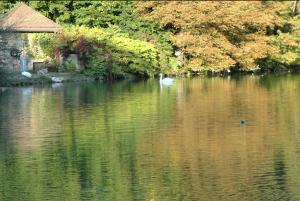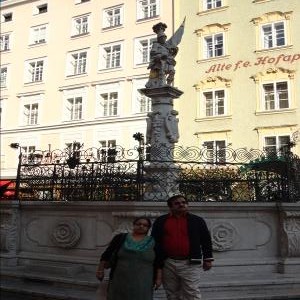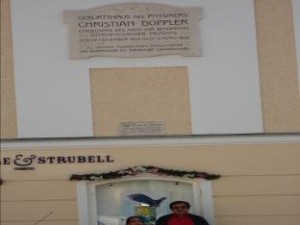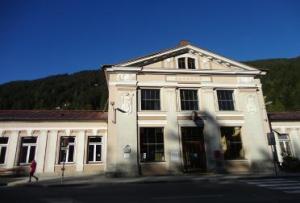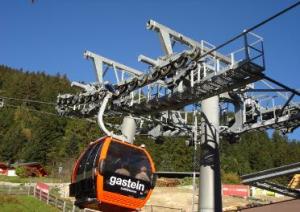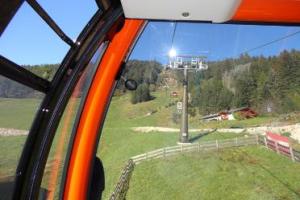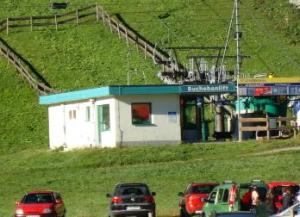 |
| Base Station,Stubnerkogelbahn, Bad Gastein, Austria |
The new Stubnerkogel Lift consists of two sections and runs from Bad Gastein directly up to the Stubnerkogel. It is a beautiful sight with Orange coloured cable cars gently moving up to the top against the back drop of green grass on the lower slopes of the Eastern Alps.The base station of the cable car system is located next to the Railway station.
 |
| Machinery of the Stubnerkogelbahn at Bad Gastein |
This lift is the key installation in Gastein’s core ski area of Stubnerkogel – Angertal – Schlossalm, covering a length of 2,600 m and a vertical rise of 1,136 m. The cable cars move at a speed of 6M/sec or 22 Km/hr.Depending on the demand and number of tourists the Cable Cars seen in the background are introduced or removed from the operating system.
 |
| Chairlift at Bad Gastein |
There is a chairlift also which winds its way up the slopes to Stubnerkogel mountain top. It works mostly in winter when the skiing season is at its peak with skiers repeatedly going up to the top in chairlifts and cables cars and skiing down at speeds depending on the individual skill.
 |
| Stubnerkogel Mountain Summit Restaurant |
There is a restaurant at the summit of the mountain which serves all kinds of food throughout the year. Chilled beer is popular in summer and hot chocolate when there is snow. In summer ice cream is popular while apple strudel in snow.
 |
| Snow Capped Eastern Alps from the Observation Deck |
Magnificent view of the snow capped Alps from the Glocknerblick observation deck on the Stubnerkogel.The observation deck is jutting out of the mountains and supported by chains. It has glass covered holes in the floor so that one can have a view of the depths under the observation deck.
 |
| Stubnerkogelbhan Station at Mountain Summit |
The cable car lift up to the Stubnerkogel has been built at a cost of around €16.5 million. At a length of 2.6 kilometres, the lift is able to carry as many as 2800 people per hour from Bad Gastein to the main ski area.
 |
| Stubnerkogelbahn Summit 7400 Feet, Bad Gastein |
The Stubnerkogel lift is one of the eight prize winning summer lifts in the province of Salzburg as it supplements the regional offer for tourists in the form of downhill hiking in summer and downhill skiing in the winter snow.
 |
| Summit Restaurant, Stubnerkogel, Bad Gastein |
In winter the whole area outside becomes white with snow.
 |
| Cable Cars Descending, Stubnerkogelbahn, Bad Gastein |
As the Stubnerkogel is exposed to wind, great importance is also given to reduce the vulnerability to wind. This is achieved through reduced height and a change in the position of the supporting pillars - particularly in the sections where the lift enters the stations, higher roller rims, heavier cabins providing better behaviour under windy conditions as well as the use of the latest technology, such as automatic monitoring of the rope position using rope position detectors.
 |
| Stubnerkogel Cable Cars, Bad Gastein |
The Stubnerkogelbahn is a top attraction of Bad Gastein and contributes towards making Bad Gastein a top destination for hikers and skiers.














